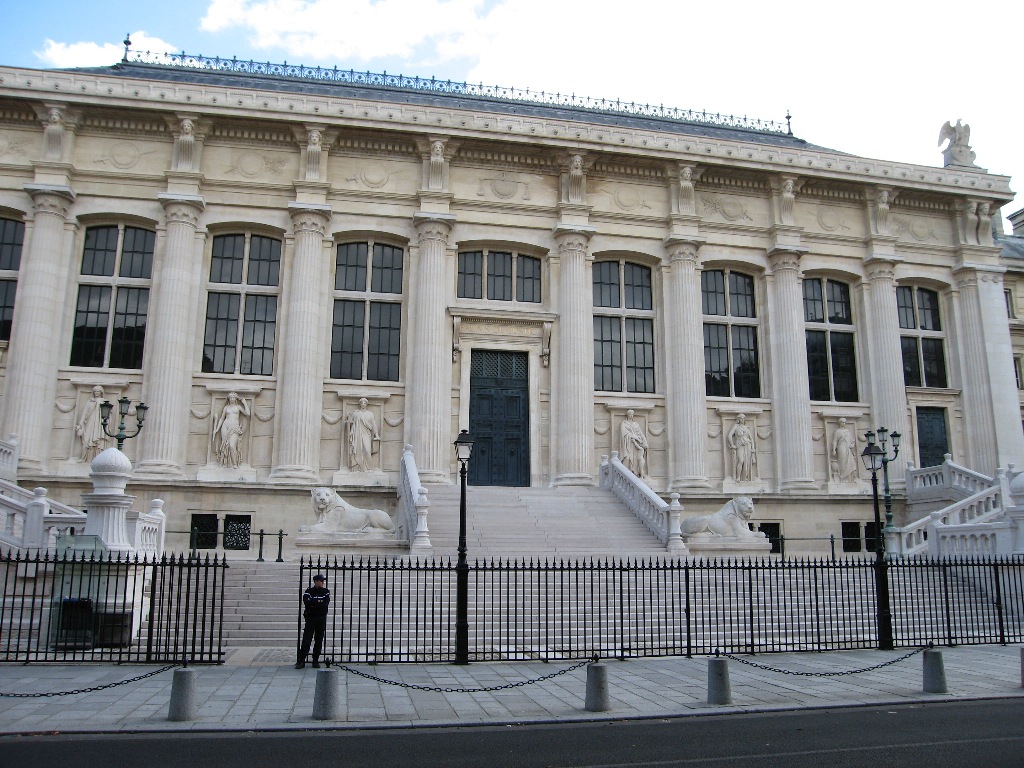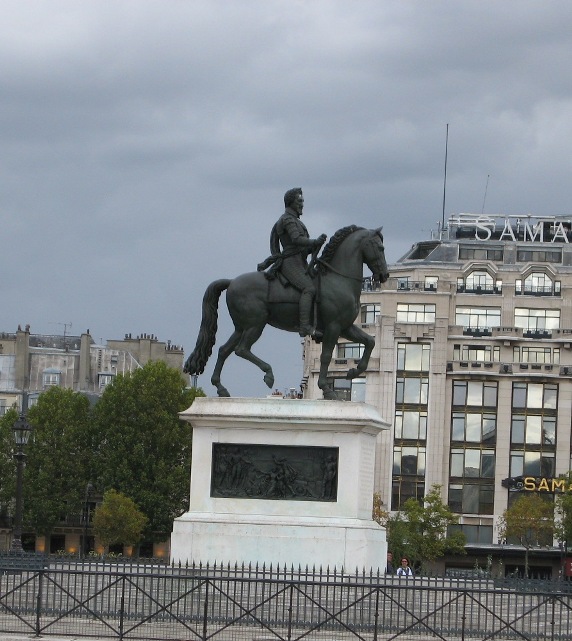
Ile de la Cité -- and a little history
In the 3rd century there was a Celtic-Gaelic settlement on an island in the River Seine. These people were called Parisii and are mentioned by Julius Caesar in a document about the region. The name Paris is derived form this tribe. Since that time there has been a continuous settlement on Paris' Ile de la Cité. The island is still the center of Paris and today a very popular tourist destination, home to both the Cathedral of Notre Dame and the Sainte Chapelle.

When you exit the Metro station (Cité) on the island the first thing you see is this plant and flower market.

Turning toward the West you see the Palais de Justice (the French Supreme Court) and the roof and spire of the Gothic Sainte Chapelle. These two buildings were part of a palace, a residence and seat of power for French kings from the 10th to the 14th century. When King Charles V (king from 1364-1380) moved his residence out of this palace, he left it in the charge of a steward, called a concierge in French. The former palace became the home of the king's courts and part of it was turned into a prison. A building to the right of the one in this photo was the residence of the concierge and has been called the Conciergerie since that time. That part later also became part of the prison.

Today, you can tour parts of the Conciergerie. This large (209 x 90 ft.) hall was completed in 1313, and used as a dining room for the king's staff (some 2000 people).

Many famous people spent time in this prison over many years. (That woman is not a prisoner. She's my mother.) Marie Antoinette spent her last days here. This courtyard is called the women's court and used to have cells around the edges. There is a large tub that you can just see on the left, where the women could wash their clothes. I doubt very much that this green area surrounded by a wooden fence was here when this was a prison.

Inside the enclosure of the former palace is the Sainte Chapelle. The term Sainte Chapelle, meaning holy chapel was used for a chapel that was built to house holy relics. King Louis IX (king of France from 1226 - 1270) bought a crown of thorns for a very large sum of money in 1239. He and his brothers went to Constantinople to pick up his purchase and bring it back to Paris. (No free delivery in those days, I guess) He then had a chapel built to house the precious relic. The chapel was completed in 6 years, an amazingly short time in those days. Incidentally he spent more than 3 times as much for the relic as he did for the chapel. The possession of this important relic put King Louis, and France in the forefront of Latin Christendom. This king was later named Saint Louis. The Sainte Chapelle was built with two levels--the lower level pictured here was used as a parish church for the king's staff; the upper level was for the king and his immediate entourage.

These inner columns and tie bars serve the same purpose as flying butresses on the outside. They help support the wall allowing for less bulky walls and more space for windows. In medieval times the interiors of all churches were painted. The castles you see here are the symbol for Blanche of Castile, King Louis' mother. This chapel suffered serious damage in the French revolution. Restoration began in 1846 and continues today.

Above the doors on the second level is a depiction of King Louis, himself. He would have entered the chapel through those doors from his apartments in the palace. The fleur-de-lys was Louis' symbol, the castle his mother's.

There are 12 pillars around the chapel, with statues of the 12 apostles on them. This one is John.

The most impressive part of the Sainte Chapelle is the amazing stained glass windows all around the upper chapel. Photographs just can't capture the incredible effect. There are 8 windows like this one and 7 more that are as tall and half as wide. The windows tell stories from many books of the bible and the story of how Louis traveled to Constantinople to get the crown of thorns. It's worth a trip to Paris just to see this chapel.

Back outside the palace if you turn left and walk to the end of the block and the corner of the Conciergerie and then look up you'll see this clock. I've walked below this clock many times without noticing it. This is said to be the city's oldest clock. The mechanism dates from 1334.

The back of the Palais de Justice, currently the Supreme court and recently restored.

The very quiet Place Dauphine near the western tip of the Ile de la Cité is another city square built during the reign of Henri IV (who also built the Place des Vosges) . I'm not sure why the trees here are bare. The other trees in the city still have lots of green leaves. You can see a statue of Henri IV just across the street in the background of the picture.

The same statue of Henri IV (king from 1589-1610) pictured above. He overlooks the Pont Neuf (New bridge) the oldest bridge in Paris, which connects the Ile de la Cité to both banks of the Seine and the rest of Paris.

And finally the very tip of the island, as seen from the Pont Neuf.
I hope I have my facts straight here. These historical facts come from a variety of sources--tourist brochures, Wikipedia and Rick Steve's Paris 2007, one of my favorite guide books. If you spot an error be sure to let me know.
_________________________________________________
Or from the Sainte Chapelle you could walk the other way about 2 blocks and come to the Cathedral of Notre Dame de Paris.